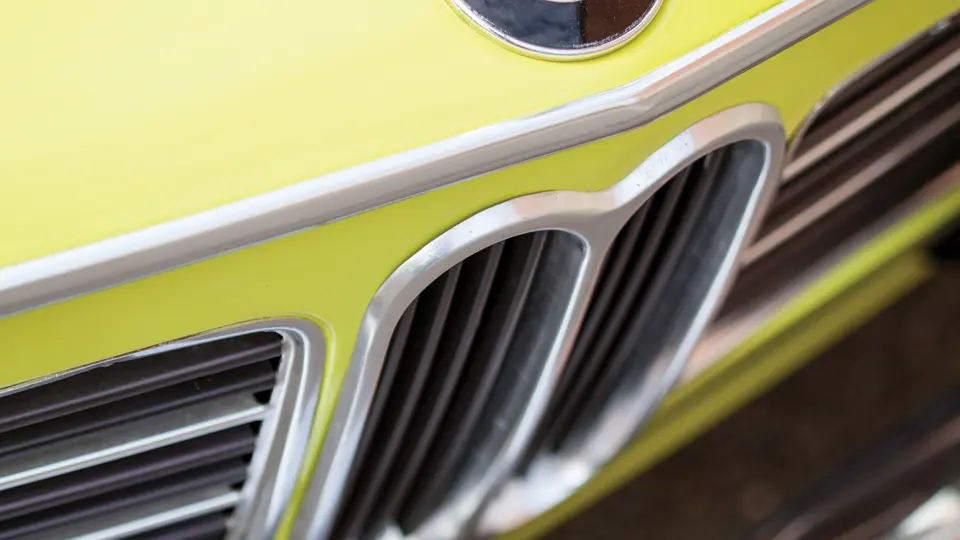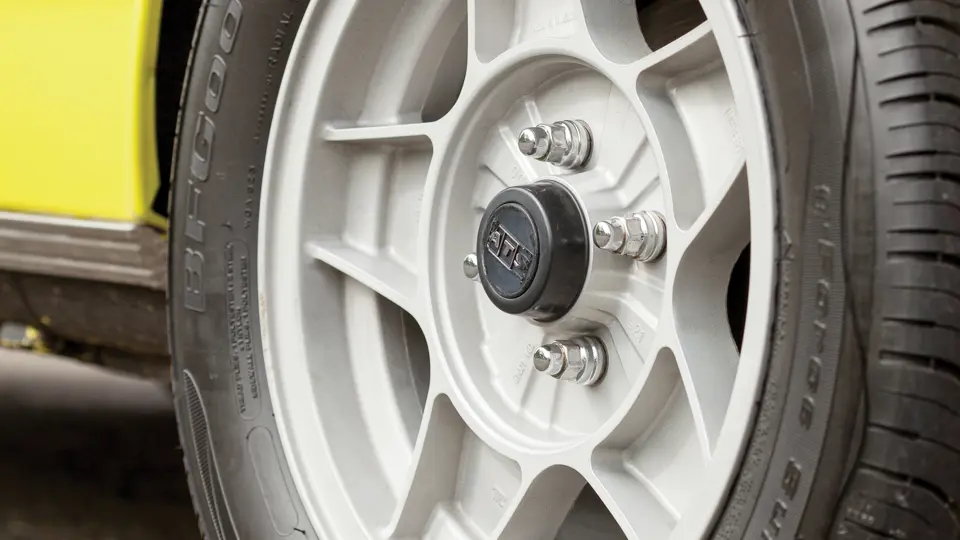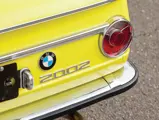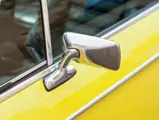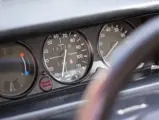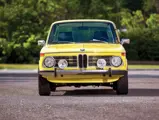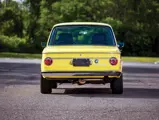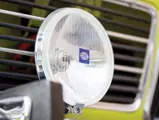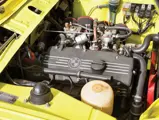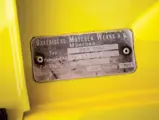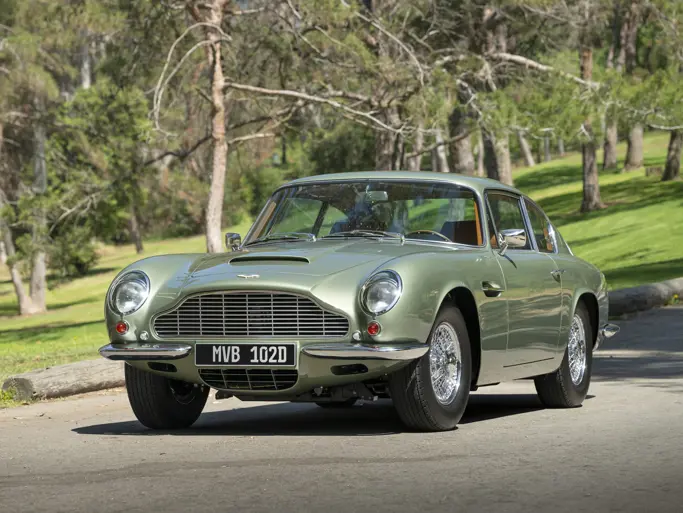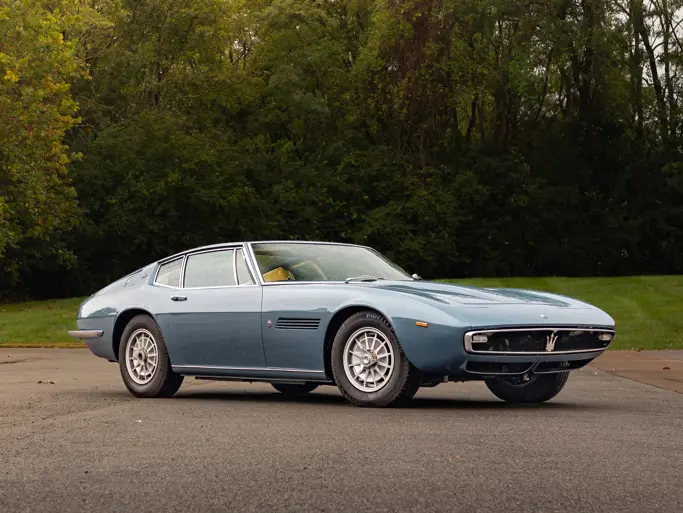100 hp, 1,990 cc OHC inline four-cylinder engine, four-speed manual synchromesh transmission, independent front suspension with coil springs, McPherson struts, anti-roll bar, and telescopic dampers, independent rear suspension with coil springs, semi-trailing arms, anti-roll bar, and telescopic dampers, and hydraulic front disc and rear drum brakes. Wheelbase: 98.4 in.
Without question, the 2002 is considered the definitive small sports sedan. While the diminutive Isetta is thought to have saved BMW, the 2002 is regarded as the vehicle that defined the company. The 2002 has its roots in the “New Class” of medium-range family sedans first offered as the 1500 series in 1962–1964. Utterly conventional, the “three-box” sedan would become the first of a long line of BMWs to use a sturdy, imminently tunable, four-cylinder overhead-cam engine. The engine, as installed, was canted over 30 degrees to the right side of the engine bay, allowing space for multi-choke carburetion and, eventually, fuel injection on the tii models.
The success of the “New Class” BMWs cannot be understated. During the 12-year model run, a total of 398,434 were built including 196,845 2002s between January 1968 and June 1975. Paul Hahnemann, the head of marketing for BMW, convinced the Board of Management that the world was ready for a more powerful version of BMW’s sporting sedan. It was not just the German and European market that he felt was ready, it was also the American market, where BMW had previously failed to claim much market share. So it was, and the 2002 was born.
Although the engine developed five horsepower less than its 1600 tii predecessor, torque was considerably higher, especially off the line at low revs. To differentiate the car from its four-door sibling, it was called 2002, while the four-door model was called the 2000. Standard equipment included a brake servo and a hydraulic clutch. Within six months of introduction, it was given dual circuit brakes. Exports to North America amounted to 20 percent of production, and the car was considered a runaway success for BMW. Car & Driver referred to it as the “whispering bomb.”
According to the consigner, this 2002 has been recently restored from a clean, accident-free example. Painted Golf (yellow) over black leatherette, this U.S.-delivery example is equipped with a four-speed manual transmission. BMW sport seats have been installed and cleverly upholstered in the original pattern of the upholstery used when new. Carpets are original, as is the dash pad, which has no cracks. Numerous upgrades have been fitted, including ATS 14-inch five-spoke wheels with BF Goodrich G-Force tires, Hella driving lights, a Crane coil, Weber carburetors with velocity stacks (including covers), a VDO water bottle, a three-spoke sport steering wheel, a stainless steel exhaust, and a special center console with additional gauges including voltage, temperature, and oil pressure.
Take a good look at this ’70s icon and it is easy to understand why the 2002 quickly became a cult favorite among enthusiasts. For a generation of drivers who lusted after both performance and practicality, the 2002 is the ultimate driving machine.




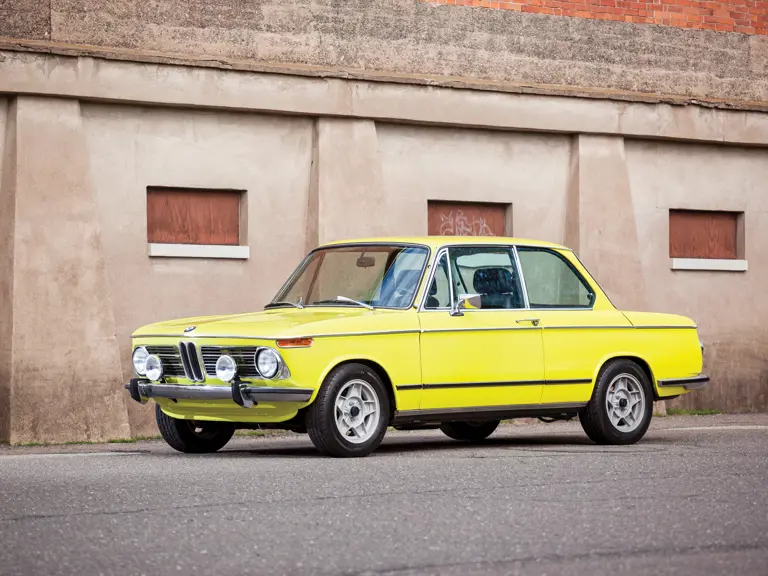
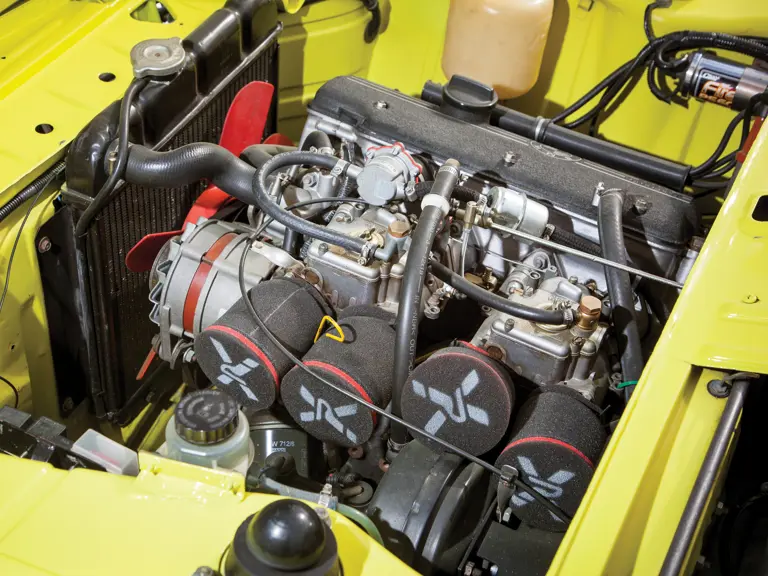
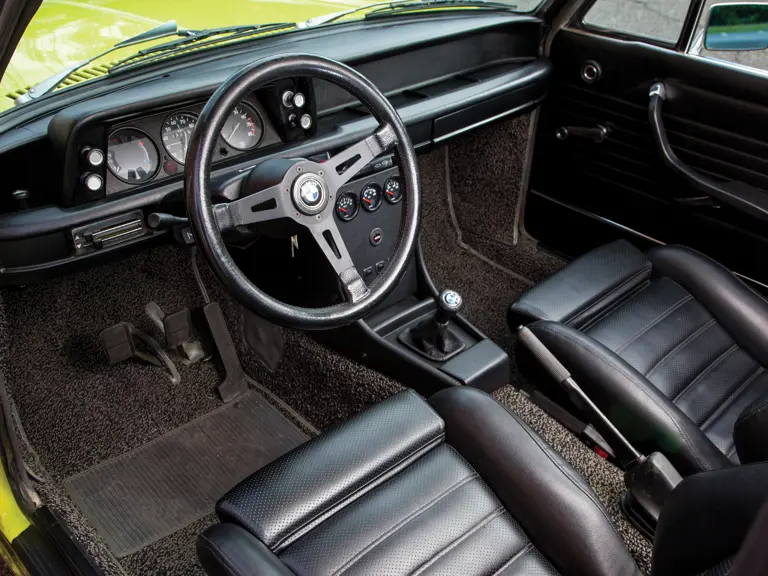


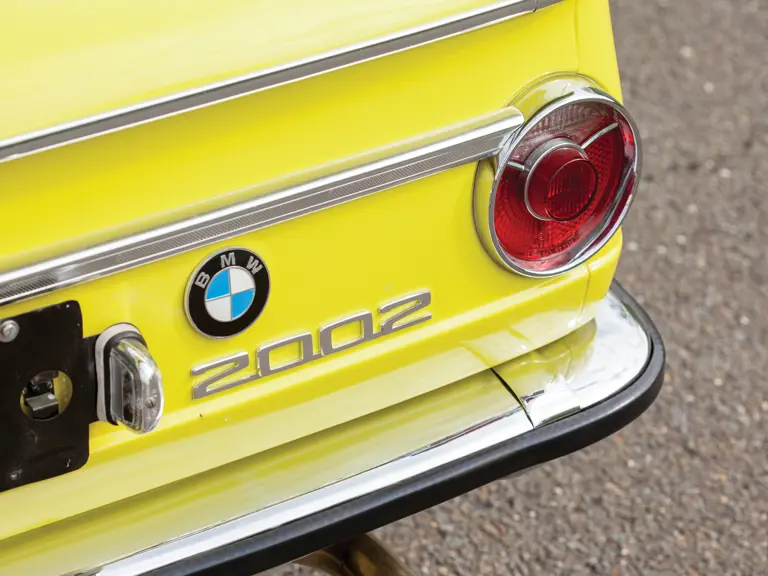
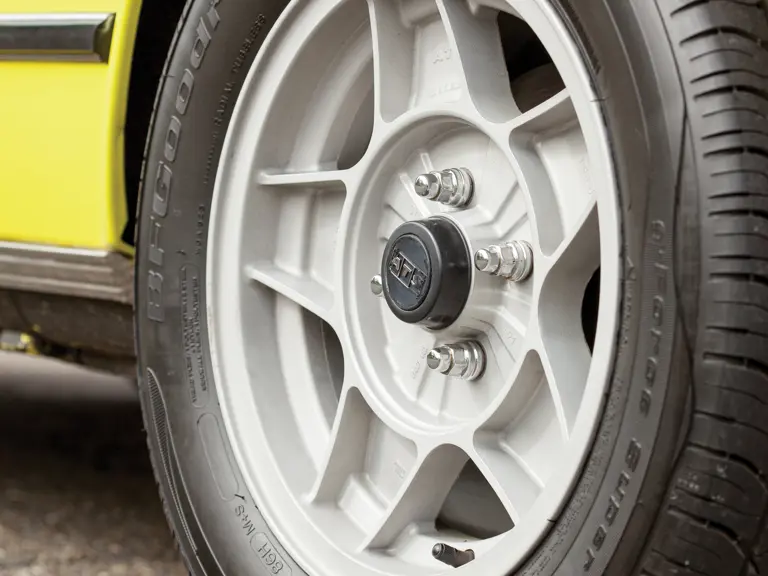




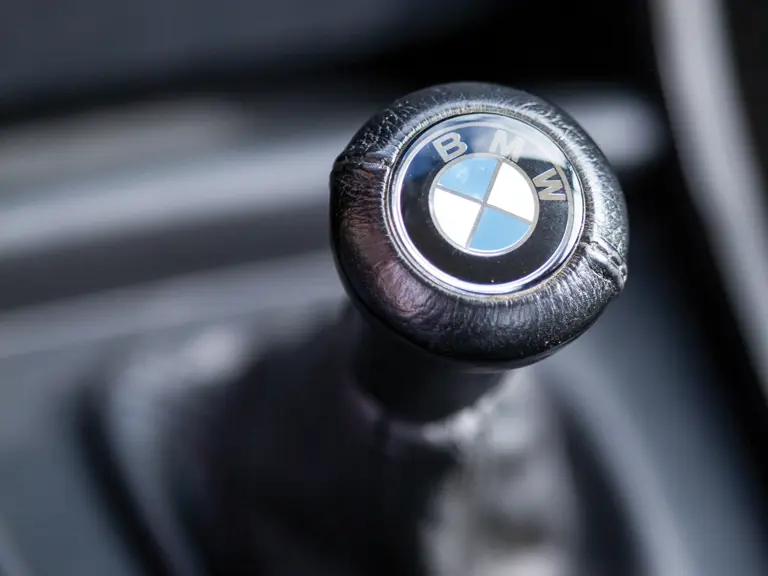
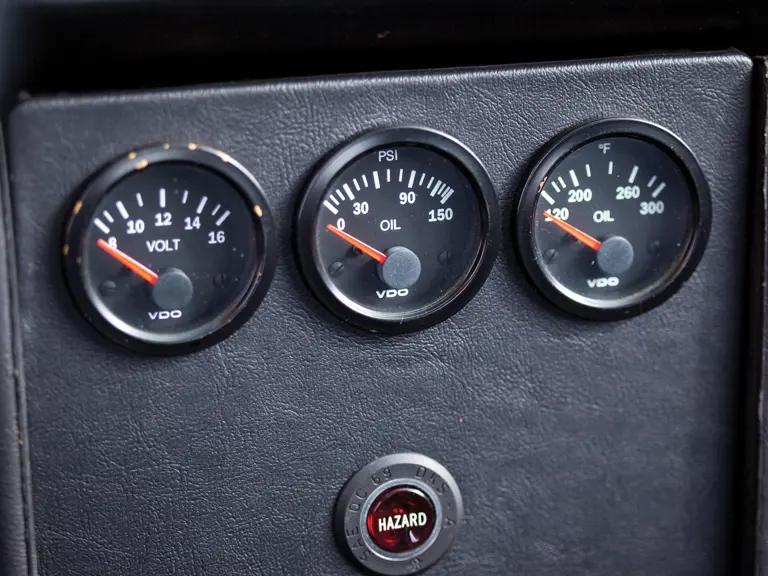
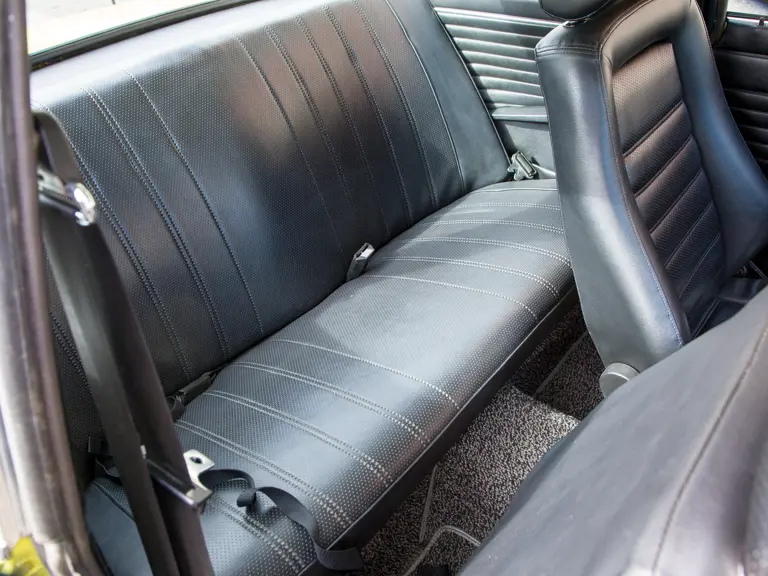
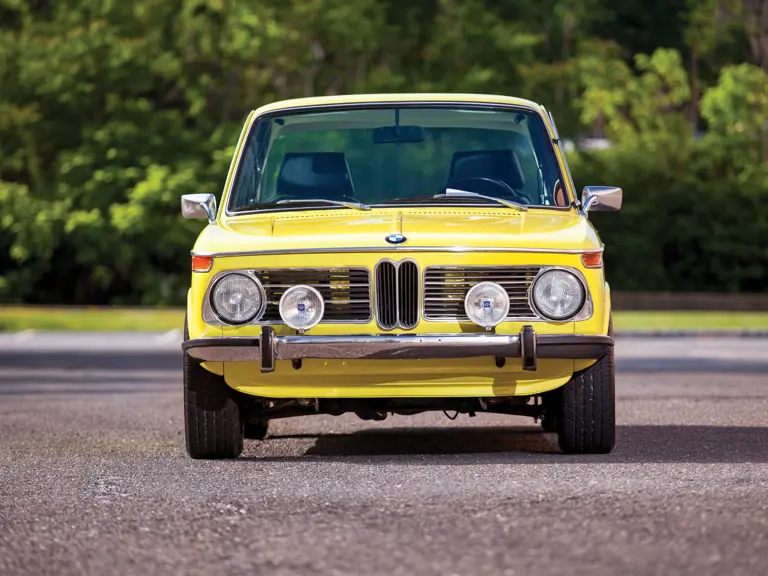



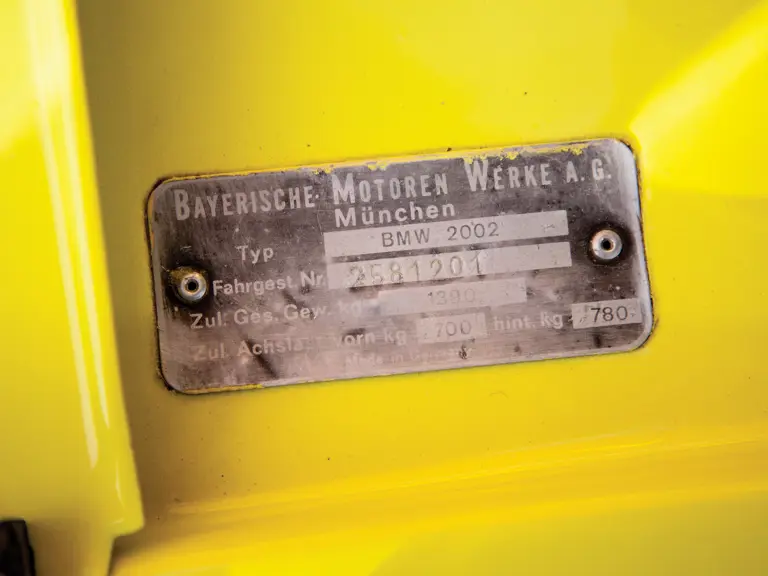

 | Plymouth, Michigan
| Plymouth, Michigan
